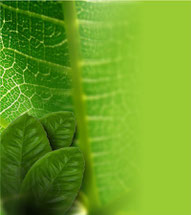Theme V: Drug analysis methods

Thin-layer chromatography
What is the thin-layer chromatography?
Thin-layer chromatography is a simple and efficient method used to identify and quantify secondary metabolites in herbal drugs, its extracts and tinctures, as well as to identify the presence of a secondary metabolite of pharmacological interest in a pharmaceutical formulation.
Chromatography procedures
There are two ways, one on paper and one on silica gel plate.
Both the paper and the silica gel plate are called stationary phase.
The material to be tested is deposited in each of them, with a laboratory pipette or similar instrument (sampling syringe) on a reference line or base. The silica gel plate or paper with the deposited sample is placed inside a chamber with a mixture of organic solvents that are specific for each assay, this is called mobile phase.
After some time the solvent mixture (mobile phase) moves through the silica gel plate (stationary phase). The travel of the solvent mixture must be determinated.
In such measure that the sample is moved over the stationary phase leaves a trail of organic substances to be revealed by means of a chemical reagent or by exposing the mobile phase under the rays of ultraviolet light.
It´s determined the distance from the dot or dots detected from its current position to the starting point of the sample. The ratio between the distance to the dot and the total travel of the mobile phase is called Retention factor (Rf).
When the active ingredients of a drug are not known, the identification of the drug can be carried out through the determination of characteristic substances of the plant itself, even though they don´t have pharmacological activity (chromatographic profile) with an extract prepared under the same conditions sample, but with a reference plant material.
These substances called markers (or positive markers) are selected from the different compounds characteristic of the medicinal plant. The use of them must be limited only to the identification of plant material, extracts and tinctures. The markers can serve, likewise, to identify the presence of the drug in a phytodrug.
When markers aren´t the responsible substances for the pharmacological action of the drug, should not be used for quantitative determinations.
The presence of colored dots or bands with the same Retention factor (Rf) than the reference substances on the chromatogram sample, is not sufficient to identify the plant material.
The presence of other colored dots or bands must be written down, as well as their position regarding the reference substances used. The use of reference
substances which are not constituents of the plant is useful in determining the occurrence of fakes, these substances are referred to negative markers.
Chromatographic conditions must be specified in the stationary phase, the mobile phase and the resolution.
see also
Visual examination and microscopic inspection of herbal drugs
Determination of foreign matter
Determination of microorganisms
Determining extractable substances

 Pharmacognosy´s topics - Medicinal plants
Pharmacognosy´s topics - Medicinal plants


Write a comment